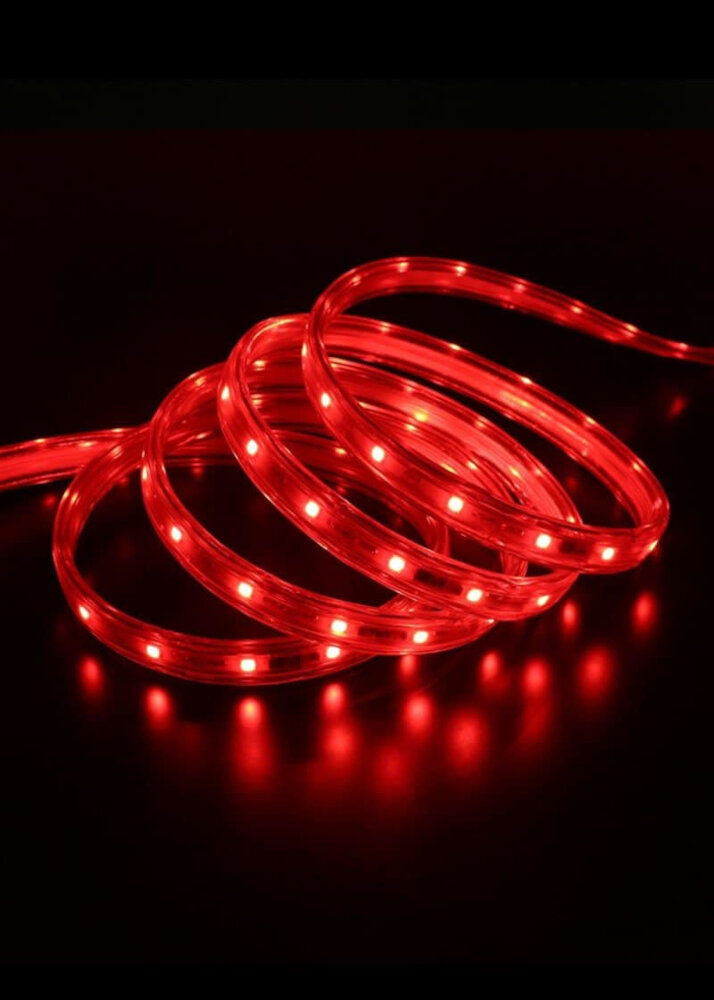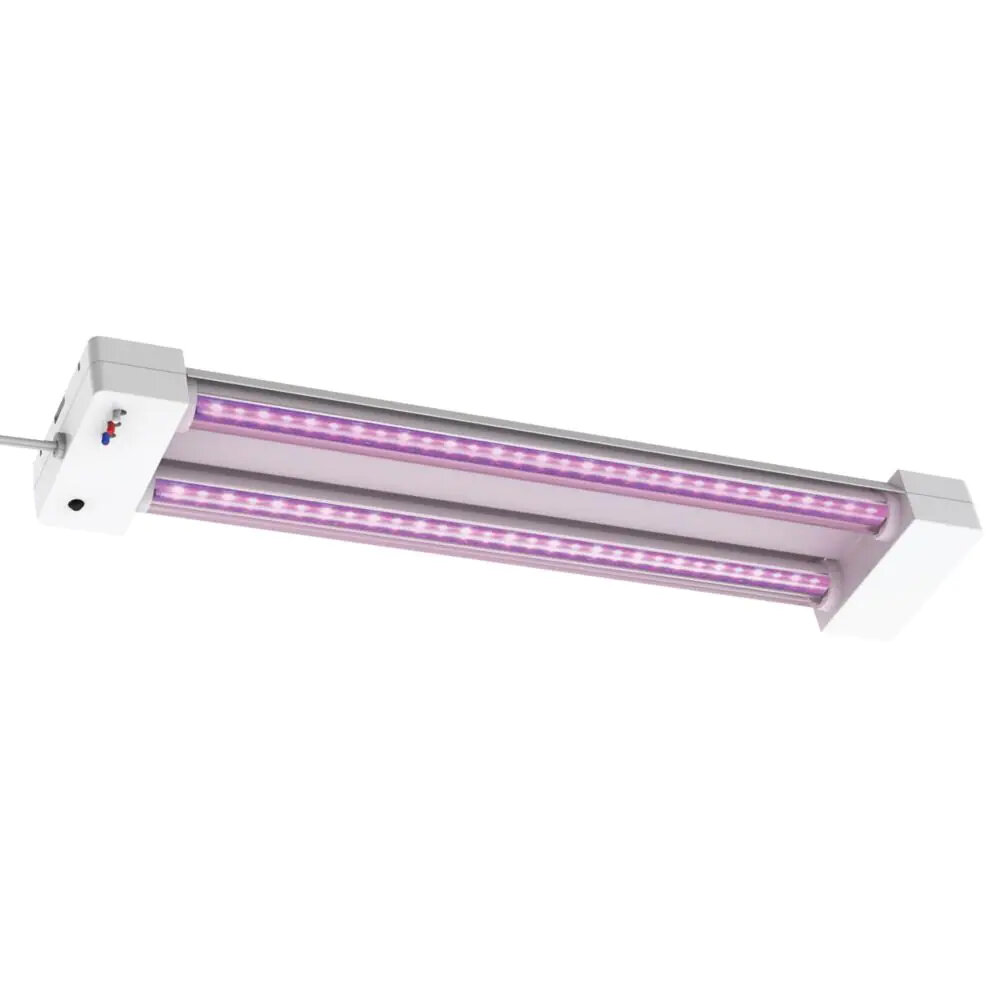Uncovering the Culprits: What Causes LED Light Bulbs to Flicker

LED light bulbs are a popular and energy-efficient lighting solution, but they are not immune to issues. One of the most common problems that LED bulbs encounter is flickering. Flickering LED bulbs can be quite frustrating and may even cause headaches and eye strain. However, understanding the causes of the flicker can help you prevent it from happening and ensure that you have a stable and reliable lighting system. There are several potential causes of LED bulbs flickering, including voltage fluctuations, incompatible dimmer switches, and manufacturing defects. Additionally, the flicker may be a sign of a more serious electrical problem. In this article, we will explore the various reasons why LED bulbs flicker and provide tips on how to troubleshoot and fix the issue. Whether you are a homeowner or a professional electrician, this guide will help you uncover the culprits behind LED bulb flicker and keep your lighting system running smoothly.
The popularity of LED light bulbs has been on the rise in recent years, and for good reason. LED bulbs are highly energy-efficient, making them more cost-effective than traditional incandescent bulbs. Additionally, they have a longer lifespan, reducing the need for frequent replacements. They also emit less heat, making them safer to use and reducing the risk of fire hazards. Furthermore, LED bulbs are highly versatile and can be used in a variety of settings, from homes to businesses. With all these benefits, it’s no surprise that more and more people are turning to LED bulbs as their go-to lighting choice. However, it’s important to be mindful of the potential for flickering and take steps to prevent it.
LED light bulbs, or Light Emitting Diode bulbs, are a type of energy-efficient lighting that uses a semiconductor to produce light. Unlike traditional incandescent bulbs, LED bulbs do not rely on heating a filament to produce light. Instead, they use a small chip that emits light when an electrical current is applied. LED bulbs are known for their longevity and energy efficiency, making them a popular choice for homeowners and businesses alike. However, like any technology, LED bulbs can experience issues such as flickering, which can be caused by a variety of factors.
Flickering in LED light bulbs is a common issue that can be caused by various factors. One of the main culprits is voltage fluctuation, which can be caused by electrical systems such as dimmer switches or faulty wiring. Another factor is the quality of the LED driver, which can affect the stability of the current flow. In addition, electromagnetic interference from other electronic devices can also cause flickering. To avoid this issue, it is recommended to use high-quality LED bulbs and drivers, as well as ensuring the electrical system is properly installed and functioning.
Voltage Fluctuations

Voltage fluctuations are one of the major culprits that cause LED light bulbs to flicker. These fluctuations in voltage can be caused by a variety of factors, such as changes in the electrical load on the circuit or variations in the voltage supplied by the electrical grid. When an LED light bulb is exposed to these fluctuations, it can cause the bulb to flicker, dim, or even turn off completely. One of the main causes of voltage fluctuations is overloading of the electrical circuit. When too many devices are connected to a single circuit, it can cause the voltage to fluctuate, which in turn can cause LED light bulbs to flicker. Another common cause of voltage fluctuations is the use of faulty electrical equipment. If the wiring or electrical components in your home are damaged or worn out, it can cause voltage fluctuations that can affect the performance of your LED light bulbs. By identifying and addressing the causes of voltage fluctuations, you can ensure that your LED light bulbs remain stable and flicker-free.
Voltage fluctuations can cause LED light bulbs to flicker due to the inconsistency of the electric current flowing through the bulb. LED bulbs require a constant and stable voltage to operate correctly, and any variations in voltage can lead to flickering. This is because the LED bulb’s driver, which manages the voltage and current flow, may not be able to regulate the power adequately. Voltage fluctuations can occur due to various factors, such as faulty wiring, electrical interference, or large appliances turning on and off. These fluctuations can cause the LED bulb to quickly turn on and off, creating a flickering effect that can be frustrating and even harmful to one’s eyes.
Voltage fluctuations can occur due to a variety of reasons, including electrical storms, power surges, and overload on the electrical grid. Weather conditions such as lightning, high winds, and heavy rain can cause voltage spikes or dips that affect LED light bulbs. Electrical equipment that draws a lot of power, such as air conditioners and refrigerators, can also cause voltage fluctuations. Additionally, faulty wiring, loose connections, and worn-out components in the electrical system can contribute to voltage fluctuations that cause LED light bulbs to flicker. Understanding the causes of voltage fluctuations can help identify the culprits behind LED light bulb flicker and take necessary measures to prevent them from occurring.
Voltage fluctuations are one of the leading causes of LED light bulb flickering. To mitigate these fluctuations, a few simple steps can be taken. First, installing a voltage stabilizer or regulator can help to maintain a steady voltage level. Additionally, using high-quality wiring and circuit breakers can improve the overall electrical stability of a home or building. Another option is to switch to LED bulbs that have built-in voltage regulation technology, which can help to regulate the power supply and prevent flickering. Finally, reducing the number of appliances or devices that are connected to the same circuit can also help to reduce voltage fluctuations and prevent LED light bulb flickering. By taking these steps, homeowners and building managers can ensure that their LED lighting systems operate smoothly and without any flickering issues.
Incompatible Dimmer Switches

Incompatible dimmer switches are one of the primary culprits behind LED light bulb flickering. Dimmer switches are designed to reduce the amount of electrical current flowing to a bulb, thereby reducing its brightness. However, LED bulbs are powered by a direct current which requires a specific voltage to function optimally. Incompatible dimmer switches can cause the voltage to fluctuate, and this can result in the LED bulb flickering. The flickering occurs because the bulb is unable to maintain a constant voltage, which affects the quality of light emitted. Incompatible dimmer switches can damage the LED bulb over time and reduce its lifespan. Therefore, it is crucial to use dimmer switches that are specifically designed for use with LED bulbs to prevent flickering. Incompatible dimmer switches can also cause electromagnetic interference (EMI) which can affect other electronic devices in the home. EMI occurs when the electrical current flowing through the dimmer switch generates an electromagnetic field that can interfere with the operation of other electronic devices such as radios and televisions. This can cause distortion or static in the audio and video output of these devices. Incompatible dimmer switches that cause EMI can be identified by their lack of certification. Certified LED dimmer switches are designed to reduce EMI and are tested to ensure their compatibility with LED bulbs. Therefore, it is essential to choose certified dimmer switches to prevent EMI and ensure optimal performance of all electronic devices in the home.
Incompatible dimmer switches can be a major culprit in causing LED light bulbs to flicker. This is because traditional dimmer switches were designed for incandescent bulbs and use a method called phase cutting, where the amount of power supplied to the bulb is reduced by cutting off part of the AC waveform. However, this method is not compatible with LED bulbs, which require a constant flow of power. As a result, when a dimmer switch designed for incandescent bulbs is used with LED bulbs, the LED bulbs may flicker, strobe, or even fail to turn on. This is due to the mismatch between the dimmer switch and the LED bulb’s internal driver, which regulates the flow of power to the bulb. It’s important to ensure that the dimmer switch is compatible with LED bulbs to avoid these issues.
Dimmer switches can be a great addition to any home for those who want to create a cozy or romantic atmosphere. However, not all dimmer switches are created equal, and some can cause flickering or other issues with LED light bulbs. One example of an incompatible dimmer switch is a leading-edge dimmer, which is an older model that typically has a knob or slider control. These dimmer switches use a triac to regulate power to the light bulb, which can cause flickering or buzzing with LED bulbs. Another example is a low voltage or magnetic transformer dimmer, which is commonly used in halogen or incandescent lighting systems. These dimmer switches can also cause flickering with LED bulbs due to their design and power regulation method. It’s important to choose a compatible dimmer switch specifically designed for LED lighting to avoid these issues.
In order to prevent LED light bulb flickering, it is important to identify and replace incompatible dimmer switches. This can be achieved by first checking the compatibility of the dimmer switch with LED bulbs, as not all dimmer switches are compatible with LED technology. If the dimmer switch is incompatible, it should be replaced with a switch that is specifically designed for LED bulbs. Additionally, it is important to ensure that the wattage of the switch is appropriate for the number of LED bulbs being used, as using too many bulbs on a switch with a low wattage can cause flickering. Finally, it is recommended to consult with a professional electrician to ensure proper installation and compatibility. By taking these steps, one can successfully prevent LED light bulb flickering and enjoy the benefits of energy-efficient lighting.
Temperature Changes

Temperature changes are one of the primary culprits behind LED light bulbs flickering. LED bulbs are highly sensitive to changes in temperature, and fluctuations can cause the bulbs to flicker or even fail. When the temperature rises, the resistance of the LED diode increases, which can cause the flickering. On the other hand, when the temperature drops, the resistance decreases, which can cause the flickering to stop. This is why LED bulbs are often recommended for use in environments with stable temperatures, such as indoors. Another factor that can contribute to temperature changes and flickering in LED bulbs is the use of dimmer switches. Dimmer switches work by regulating the amount of voltage that flows to the bulb, and this can cause fluctuations in temperature. If the dimmer switch is not compatible with the LED bulb, it can cause the bulb to flicker or even fail. To avoid this issue, it is important to use dimmer switches that are specifically designed for use with LED bulbs. Additionally, it is important to ensure that the wiring and connections are properly installed to avoid any fluctuations in temperature. By taking these precautions, LED bulbs can provide a reliable and energy-efficient lighting solution.
Temperature changes can cause LED light bulbs to flicker due to the fact that LEDs are highly sensitive to temperature fluctuations. When the temperature rises, the resistance in the LED increases, which can lead to fluctuations in the current and voltage, causing flickering. Similarly, when the temperature drops, the resistance decreases, leading to an increase in the current and voltage, which also causes flickering. In addition, temperature changes can also affect the electronic components in the LED driver, which regulates the current and voltage to the LED. When the components heat up or cool down, they can become unstable, leading to fluctuations in the current and voltage, causing flickering in the LED light bulb.
Temperature changes can occur in various scenarios and have a significant impact on the performance of LED light bulbs. For instance, if the ambient temperature is too low, the bulb’s internal temperature will decrease, and the electrical resistance will increase, causing the bulb to flicker. On the other hand, if the temperature is too high, the opposite effect will occur, and the bulb will overheat, leading to a reduction in its lifespan. Additionally, when the LED bulb is continuously turned on or off, it generates heat and cools down, causing thermal expansion and contraction, which could result in flickering or even failure of the bulb. Other factors such as humidity, airflow, and the presence of other heat sources can also contribute to temperature changes and, in turn, cause LED bulbs to flicker.
Temperature changes can have a significant impact on the performance of LED light bulbs, causing them to flicker or even fail. To prevent this, a few simple measures can be taken. First, ensure that the bulb is compatible with the fixture and that it is not overheating. Installing a heat sink or fan can help dissipate excess heat. Additionally, controlling the ambient temperature of the room can also help regulate temperature changes. Finally, selecting high-quality LED bulbs from reputable manufacturers can help ensure their reliability and reduce the likelihood of flickering caused by temperature changes. By taking these steps, users can enjoy the many benefits of LED lighting without the annoyance of flickering or other performance issues.
Manufacturing Defects

Manufacturing defects are one of the leading causes of LED light bulb flickering. These defects occur during the production process, and they can manifest in various ways. For example, the LED chips themselves might not be installed correctly, or the wiring might be faulty. Other issues can include poor soldering or bad connections between different components. When manufacturing defects are present, they can cause the LED light bulb to flicker or fail entirely. This is because the defective components can’t function as intended, and they can’t provide a steady flow of electricity to the bulb. To mitigate the risk of manufacturing defects, LED light bulb manufacturers must maintain strict quality control protocols. This involves testing the components at every stage of production to ensure that they meet the required standards. Additionally, manufacturers must invest in high-quality components and ensure that their production facilities are equipped with the latest technology. By doing so, they can reduce the likelihood of manufacturing defects and provide consumers with reliable, long-lasting LED light bulbs. Ultimately, manufacturing defects are an unfortunate reality of the production process, but by taking the right steps, manufacturers can minimize their impact and ensure that their products meet the highest quality standards.
Manufacturing defects in LED light bulbs can cause flickering due to several reasons. Firstly, if the LED chips are not placed correctly on the circuit board or if the soldering is not done correctly, it can cause an interruption in the flow of electricity, resulting in flickering. Secondly, if the LED driver is not designed correctly, it can cause the bulb to flicker. This is because the driver controls the flow of electricity to the LED, and if it is not designed to handle the voltage or current, it can cause fluctuations, leading to flickering. Lastly, if the components used in the LED bulb are of low quality or do not meet the required standards, it can also cause flickering. Therefore, it is essential to ensure that LED bulbs are manufactured to the highest quality standards to avoid flickering and ensure reliable performance.
The manufacturing process of LED light bulbs involves several steps, and even the slightest mistake during any of these can cause a defect. Some common manufacturing defects in LED bulbs include poor soldering joints, inadequate thermal management, faulty driver circuitry, and low-quality components. Poor soldering can result in loose connections or shorts, which can cause flickering. Inadequate thermal management can cause the bulb to overheat, leading to premature failure. Faulty driver circuitry can cause the bulb to flicker or fail to turn on altogether, while low-quality components may not meet the required specifications, leading to inconsistent performance. Identifying and addressing these manufacturing defects is crucial to ensure the quality and reliability of LED light bulbs.
If you suspect that your LED light bulb is exhibiting manufacturing defects, there are a few ways to identify and replace it. First, carefully examine the bulb for any physical damage, such as cracks or discoloration. Next, check the bulb’s specifications to ensure it is compatible with your fixture and that it is not being overloaded. If the bulb is flickering, try replacing it with a different LED bulb or temporarily installing a traditional incandescent bulb to see if the flickering stops. If the issue persists, it may be a problem with the fixture or wiring, and a professional electrician should be consulted. In any case, it is important to address any defects or malfunctions promptly to ensure the longevity and safety of your lighting system.
LED light bulbs have become the most popular lighting solution in recent years, but despite their many advantages, they are prone to flickering. There are several culprits that can cause LED light bulbs to flicker, including voltage fluctuations, incompatible dimmer switches, and electromagnetic interference. Voltage fluctuations can occur due to faulty wiring or electrical appliances, causing the LED bulb to receive inconsistent power. Similarly, using an incompatible dimmer switch can also cause flickering, as these switches are designed for traditional incandescent bulbs rather than LED bulbs. Lastly, electromagnetic interference from nearby electrical devices can also cause flickering by disrupting the flow of power to the LED bulb. Identifying the cause of LED flickering is crucial in finding a solution to the problem, and it is important to address it promptly to avoid any further damage to the bulb or the electrical system.
Identifying and resolving LED light bulb flickering is crucial for several reasons. First and foremost, flickering can cause discomfort and even headaches for some individuals. Moreover, it can be an indication of a more significant underlying issue, such as incompatible dimmer switches or voltage fluctuations. Ignoring the flickering may lead to the premature failure of the bulb or even pose a safety hazard. Therefore, it is essential to troubleshoot the issue and find a solution to ensure a consistent and reliable source of light.
In conclusion, the future of LED light bulbs is promising, with continued advancements in technology improving the quality and reliability of these bulbs. However, flickering remains a persistent issue that needs to be addressed to ensure customer satisfaction. One potential solution to prevent flickering is the use of high-quality LED drivers that can regulate the voltage and current supplied to the LED chip. Another approach is to improve the design of the bulb itself, such as using thicker wires or better heat dissipation materials. It is important for manufacturers to continue researching and implementing solutions to prevent flickering, as it can greatly impact the user experience and perception of LED lighting technology.
Conclusion

In summary, the flickering of LED light bulbs can be caused by various factors, including voltage fluctuations, incompatible dimmer switches, and poor quality bulbs. It is essential to identify the root cause of the flickering to ensure that the issue is resolved effectively. Additionally, proper installation and maintenance of LED bulbs can help prevent flickering and extend their lifespan. As LED technology continues to evolve, it is crucial to stay informed and adapt accordingly to ensure optimal performance and efficiency. Overall, understanding the causes of LED light bulb flickering is crucial in maintaining a safe and comfortable lighting environment.




